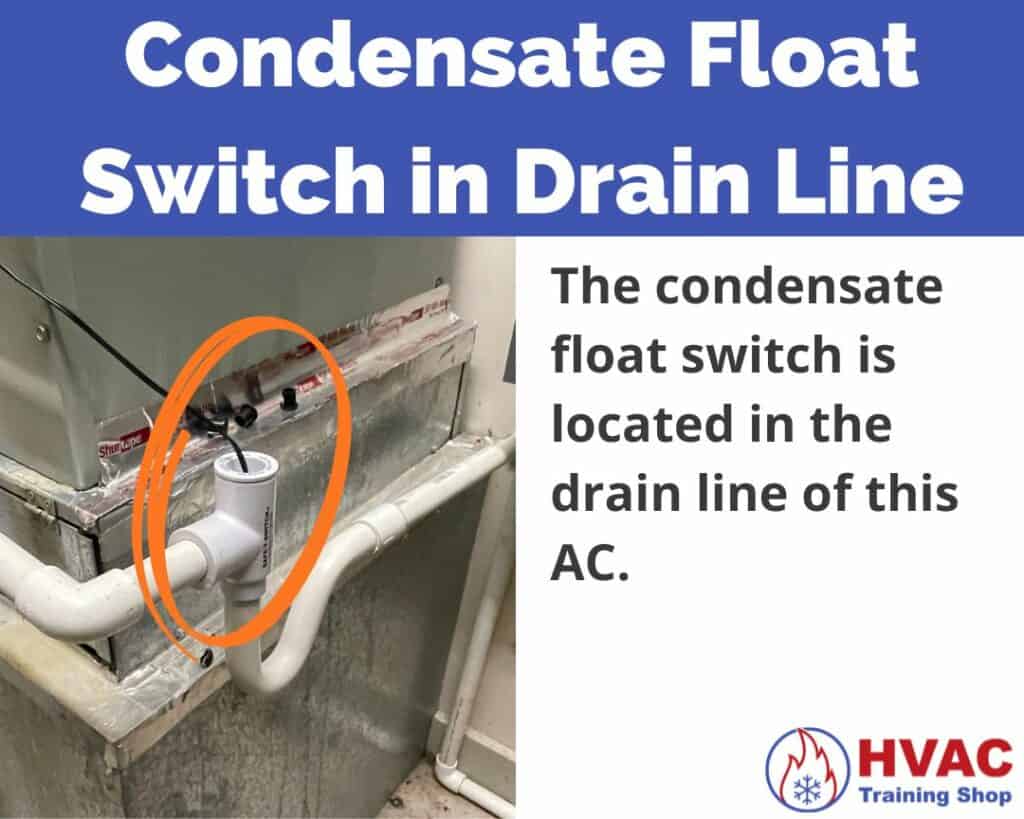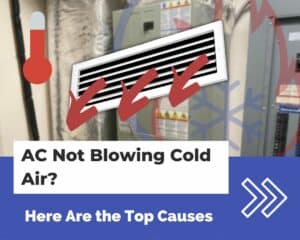Picture this: You go up to your thermostat and adjust its temperature—but instead of your AC turning on and cooling your home, it stays off and your home stays silent.
Or what if your thermostat turns on the AC, but it only blows warm air?
In this article, I’ll go over what you should do if your thermostat doesn’t turn on your AC. I’ll also go over what you should do if your thermostat doesn’t turn on your AC and only blows warm air.
What to do when your thermostat doesn’t turn on your AC
First things first—you should always check the batteries in your thermostat if it’s not turning on your AC.
Pull off your thermostat from the wall and check if it has a battery compartment behind it. Change out the batteries, reinstall the thermostat, and check if your AC works.
Not all thermostats have batteries—but it’s a good thing to check first if you’ve never had troubles with the thermostat in your home.
Now that I’ve gotten that out of the way, here are the steps that you should take if your thermostat isn’t turning on your AC:
- Check your thermostat’s temperature setpoint
- Check if your AC circuit breaker is tripped
- Check the AC condensate drain for clogs
- Check the control board diagnostic light
- Check the thermostat wiring
- Check your thermostat for correct placement
Check your thermostat’s temperature setpoint
The most common reason why a thermostat is not turning on the AC is due to the temperature setpoint.
The temperature setpoint on your thermostat needs to be lower than the measured temperature on your thermostat.
This may seem like common sense, but most people don’t consider that the measured temperature on the thermostat can be incorrect.
If the temperature sensing element in your thermostat is bad, it could read a lower temperature than what it actually is in your home.
For example, if your thermostat’s sensor is broken and reading 50°F, then your AC won’t ever turn on.
Most thermostats display their measured temperature, which is denoted as “Indoor” or “Room”. If the indoor temperature is lower than the “Set” or “Setting” temperature, your thermostat won’t turn your AC on.
Check if your AC circuit breaker is tripped
A tripped circuit breaker will prevent your thermostat from turning on your AC.
In most homes, the power to the thermostat and the power to the AC unit outside is on two separate circuit breakers.
So if the circuit breaker for your AC unit outside trips, your thermostat will still have power.
Check your circuit breaker panel for any tripped breakers. The AC unit circuit breaker is usually a double-pole circuit breaker—twice as big as a normal breaker.
If your AC breaker is tripped, it could be due to one or more issues.
Check out my article below for the most common causes of a tripped AC circuit breaker:
Check the AC condensate drain for clogs
If your AC’s condensate drain pipe or drain pan gets clogged up, then your thermostat won’t turn your AC on.
Central ACs have a float switch that senses when the water level in your drain pipe or drain pan gets too high. The float switch exists to prevent condensate overflows out of your AC.

If you suspect that your AC’s condensate drain is clogged up, check for standing water on the floors around the AC’s air handler in your home. You can also open up the air handler’s access door to check inside the unit for standing water.
Check out my article below for more information about what you should do if your AC’s condensate drain line is clogged:
Check the control board diagnostic light
Your AC’s control board will indicate its operating status via its diagnostic light. By reading the status code on the control board, you can figure out what your thermostat is (or isn’t) doing.
The control board will let you know if it’s getting the cooling signal from your thermostat. You may have to open up your AC unit outside to check what the diagnostic light blink codes mean.
Not all AC units have control boards, though—dedicated AC control boards are found mostly on newer units.
Check the thermostat wiring
If your thermostat’s wiring is loose or broken, then your thermostat won’t turn on your AC.
There are all sorts of other issues with your thermostat’s wiring that can cause your AC to not turn on.
If you suspect that your thermostat wiring is compromised, you’ll need to check your thermostat wiring at 3 different places:
- The wiring behind the thermostat
- The wiring at the control board
- The wiring at the AC condensing unit outside
Here are some common issues with thermostat wiring:
- Loose wiring connections in thermostat or control board terminals
- Insulation is not stripped enough, so the wire is only making intermittent contact
- Insulation is stripped too far, so the wires are shorting out against each other
- The wiring insulation is worn out and grounded against a piece of metal
- The wiring splice connection is exposed and corroding (usually an exposed wire nut by the AC condensing unit outside)
Check your thermostat for correct placement
If your thermostat has cold air blowing on it or is located in a cool part of your home, then it may not turn on your AC.
For example, if an AC vent is blowing directly on your thermostat, then your thermostat gets a false reading of the temperature inside your home and won’t turn on the AC.
Another thing that you need to check is for cold drafts coming out of your home’s walls.
Cool air moving through the walls may mess up your thermostat’s temperature reading if your thermostat is mounted on a wall inside your home.
If you remove your thermostat from the wall and feel cold air seeping out of the hole in the wall, then that could be causing your thermostat to not turn on your AC.




Trey,
Thank you for the information it is a great help.
I do have an issue with my HAVC, when set to cool it starts runs ok until reaches the set temperature once this happens the blower motor does not turn on again, only the compressor works.
This only happens when set to cool, when set to heat blower motor works fine.
Hi Hiram,
If your compressor continues to run after the blower turns off there could be an issue with the thermostat wiring or a component in the AC unit. You should get an HVAC technician to take a look at your system since it might be a complicated issue.
-Trey